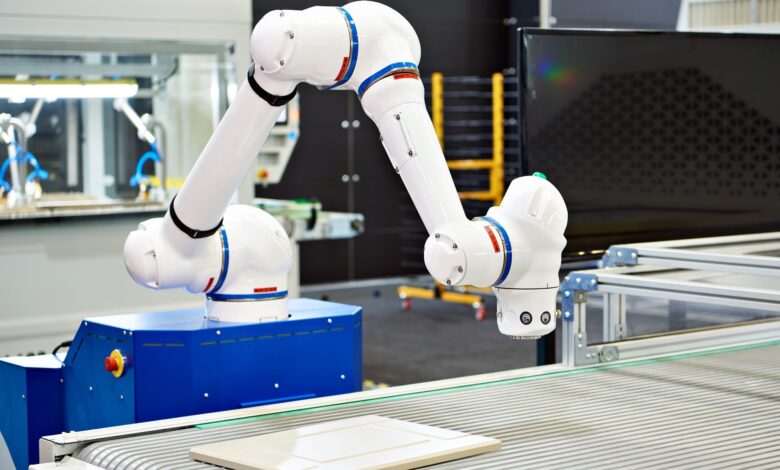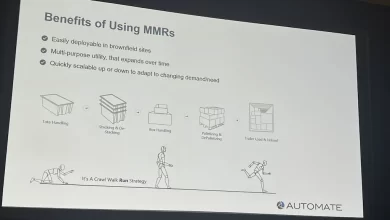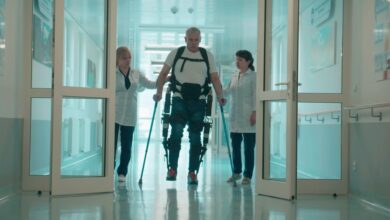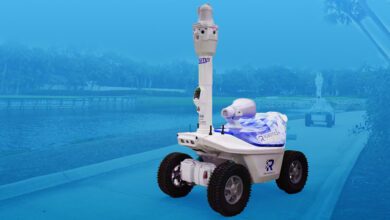Controlling 6-DOF Robotic Manipulators with “Wand Mapping”

In a recent paper posted to the journal arXiv server, researchers introduced a new method called “wand mapping” for controlling six degrees of freedom (6 DOF) robotic manipulators. Their method uses a virtual rigid linkage between the user’s hand and the robot’s end-effector.
Background
Six DoF robotic manipulators are devices that move in three-dimensional (3D) space, with both translational and rotational motions. In the medical field, they can assist in assembling parts, performing surgeries, and assisting people with disabilities. However, controlling them is particularly challenging when they operate near the user and require direct visual feedback.
In such scenarios, position-to-position control methods are preferred over position-to-velocity methods due to their better performance and user preference. However, implementing position-to-position control faces two main challenges. Firstly, position-to-position interfaces are bulky. Secondly, direct mapping of a user’s body movements to the robotic end-effector is constrained by the user’s motion range.
About the Research
In this paper, the authors proposed an alternative approach using a lever, or a fixed-length “wand”, to convert body translations into reduced rotations and body rotations into amplified translations. In this method, the user was equipped with a wand, and the virtual tip of the wand indicates the desired orientation and position of the robotic manipulator.
This mapping offers the ability to expand the translation workspace by leveraging the lever and body rotations. However, it reduces the rotational workspace, requiring the user’s hand to rotate around the robot’s end-effector, therefore enabling large translations proportional to the wand’s length.
Furthermore, the system was implemented using an OptiTrack motion capture system, a HoloLens 2 augmented reality (AR) headset, and a 7-7 DoF Kinova third-generation Ultra-Lightweight robot. The AR headset displayed the desired end-effector location to the participant, along with the current position of the robot end-effector in a semi-transparent manner. The robot end-effector’s location was guided toward the desired end-effector location using a resolved rate controller.
Experimental Comparison
The researchers compared the wand mapping method with the traditional one-to-one direct mapping method. In the direct mapping method, the displacement of the hand from the initial start of the experiment to the current instant directly corresponds to the desired robot end-effector position. They designed a set of targets requiring identical starting and ending hand positions for both mapping methods to ensure consistent and comparable performances and hand trajectories. These targets involved a 15 cm hand translation and rotations ranging from 0° to 45° around randomly uniformly chosen 3D axes.
Participant Study
Additionally, an experimental study was conducted with 20 participants aged between 18 and 55 who volunteered for the study. Each participant used both control modes and performed 7 trials for each mode. Each trial involved reaching a total of 30 targets-15 central points and 15 outer targets.
Targets alternated between central points and outer locations, resulting in 15 back-and-forth trajectories. For each operational mode, the 4th and 6th trials were conducted without the AR visualization of the desired end-effector or the wand, while the remaining trials included full AR visualization.
The authors measured several metrics for each trial, including task completion time, overshoot, hand motions, and motor control behaviors. Additionally, after the entire experimental session, participants completed questionnaires consisting of six questions about their cognitive load, intuitiveness, satisfaction, and preference for each control mode.
Research Findings
The outcomes showed comparable performance and preference for both mapping methods, with no significant differences observed in task completion time, overshoot, hand motions, and motor control behaviors. All participants achieved a 100% success rate across all targets in both modes, regardless of visualization.
Task duration and overshoot remained relatively consistent across trials, except for the 2nd and 4th trials, showing the participants’ efforts to speed up the movements and visual perturbations, respectively. Overshoot decreased in the 6th trial without visualization, indicating improved mapping integration.
Hand motions were characterized by two distinct sub-motions: a ballistic motion comprising 50% of the duration and 80 to 95% of the motion amplitude, and an adjustment motion accounting for the remaining 50% of the duration and 5 to 20% of the motion amplitude.
Motor control behaviors demonstrated a linear spatial coordination pattern between rotation and translation errors, slightly deviating below the y=x curve. Additionally, the questionnaire responses showed no significant differences between the two mappings, with participants generally perceiving both modes positively across all evaluated criteria.
Conclusion
In summary, the novel approach proved effective for 6 DoF robotic manipulation. It could be suitable for scenarios such as using the head or trunk to control the robot or performing tasks that require large translations and minimal rotations. However, the researchers acknowledged that their method could not handle complex orientations with fixed translations.
They suggested incorporating hybrid modes, automatic handling, or velocity control to further improve performance. Additionally, they recommended hybrid modes that allow switching or combining different mappings for specific scenarios, such as navigating a wheelchair or grasping objects.
Journal Reference
Poignant, A., Morel, G., Jarrassé, N. Teleoperation of a robotic manipulator in peri-personal space: a virtual wand approach. arXiv, 2024, 2406, 9309. https://doi.org/10.48550/arXiv.2406.09309, https://arxiv.org/abs/2406.09309.



